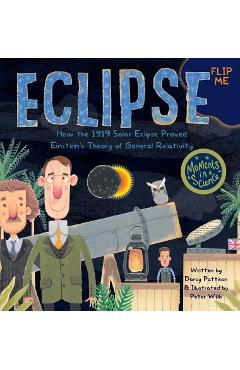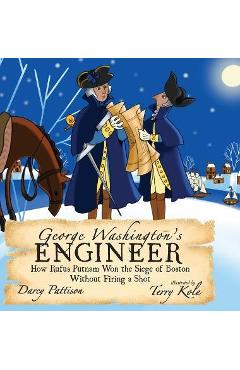Burn: Michael Faraday\'s Candle - Darcy Pattison

Detalii Burn: Michael Faraday\'s Candle -
libris.ro
128.91 Lei
161.14 Lei
Juvenile Nonfiction
Darcy Pattison
Burn: Michael Faraday\'s Candle - - Disponibil la libris.ro
Pe YEO găsești Burn: Michael Faraday\'s Candle - de la Darcy Pattison, în categoria Juvenile Nonfiction.
Indiferent de nevoile tale, Burn: Michael Faraday\'s Candle - Darcy Pattison din categoria Juvenile Nonfiction îți poate aduce un echilibru perfect între calitate și preț, cu avantaje practice și moderne.
Preț: 128.91 Lei
Caracteristicile produsului Burn: Michael Faraday\'s Candle -
- Brand: Darcy Pattison
- Categoria: Juvenile Nonfiction
- Magazin: libris.ro
- Ultima actualizare: 15-12-2024 01:42:32
Comandă Burn: Michael Faraday\'s Candle - Online, Simplu și Rapid
Prin intermediul platformei YEO, poți comanda Burn: Michael Faraday\'s Candle - de la libris.ro rapid și în siguranță. Bucură-te de o experiență de cumpărături online optimizată și descoperă cele mai bune oferte actualizate constant.
Descriere magazin:
WHAT MAKES A CANDLE BURN? Discover the secrets of fire and candles. Solid wax is somehow changed into light and heat. But how? Travel back in time to December 28, 1848 in London, England to one of the most famous juvenile science Christmas lectures at the Royal Institution. British scientist Michael Faraday (1791-1867) encouraged kids to carefully observe a candle and to try to figure out how it burned. Known as one of the best science experimenters ever, Faraday\'s passion was always to answer the basic questions of science: What is the cause? Why does it occur? Since Faraday\'s lecture, The Chemical History of a Candle, was published in 1861, it\'s never been out of print. Oddly, till now, it\'s never been published as a children\'s picture book. Faraday originally gave seven lectures on how a candle burns. Pattison has adapted the first 6000-word lecture to about 650 words for modern elementary students. Read this eloquent update of Faraday\'s candle lecture, perfect for today\'s student. Since Faraday\'s lecture, The Chemical History of a Candle, was published in 1861, it\'s never been out of print. Oddly, till now, it\'s never been published as a children\'s picture book. Faraday originally gave seven lectures on how a candle burns. Pattison has adapted the first 6000-word lecture to about 650 words for modern elementary students. Read this eloquent update of Faraday\'s candle lecture, perfect for today\'s student. Good, simple explanation of a complex chemical process. Great enrichment possibilities for teachers. I loved the illustrations, the science, and the British tone. Overall, thumbs up Deb Thrall, President, New Mexico Science Teacher\'s Association With this delightful book, Darcy Pattison brings one of Michael Faraday\'s famous scientific lectures for children to a whole new generation of young learners. Peter Willis\' colorful artwork illustrates Faraday\'s own explanations in a scientific, yet kid-friendly style. This book is a wonderful way to introduce children to this extraordinary scientist and to teach them about changes in matter with a familiar, yet remarkable, object - a candle. - Karen Ansberry and Emily Morgan, Authors of Picture-Perfect Science Lessons Burn: Michael Faraday\'s Candle is an exciting adaptation of Michael Faraday\'s (1791-1867) original special Christmas lecture, The Chemical History of a Candle. Condensed from 6000 words to about 650 words for modern elementary education students, Burn: Michael Faraday\'s Candl

Produse asemănătoare
Produse marca Darcy Pattison

Eclipse: How the 1919 Solar Eclipse Proved Einstein\'s Theory of General Relativity - Darcy Pattison
![]() libris.ro
libris.ro
Actualizat in 28/10/2025
145.03 Lei

The Plan for the Gingerbread House: A STEM Engineering Story - Darcy Pattison
![]() libris.ro
libris.ro
Actualizat in 28/10/2025
145.03 Lei

George Washington\'s Engineer: How Rufus Putnam Won the Siege of Boston without Firing a Shot - Darcy Pattison
![]() libris.ro
libris.ro
Actualizat in 28/10/2025
139.45 Lei

Erosion: How Hugh Bennett Saved America\'s Soil and Ended the Dust Bowl - Darcy Pattison
![]() libris.ro
libris.ro
Actualizat in 28/10/2025
145.03 Lei

Erosion: How Hugh Bennett Saved America\'s Soil and Ended the Dust Bowl - Darcy Pattison
![]() libris.ro
libris.ro
Actualizat in 28/10/2025
66.91 Lei
